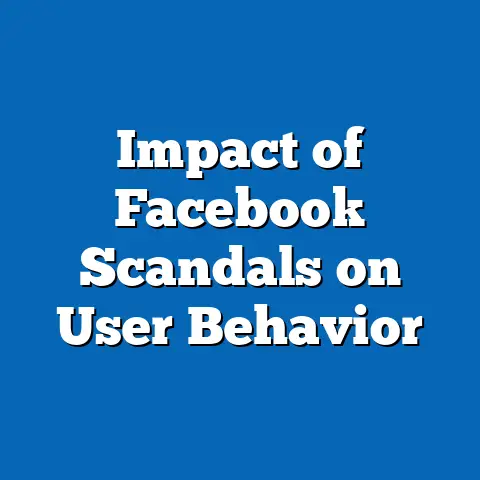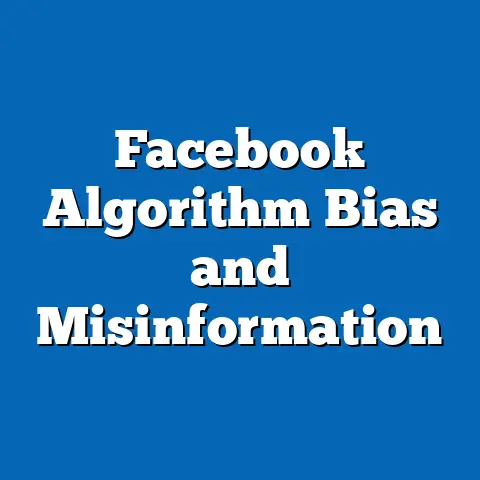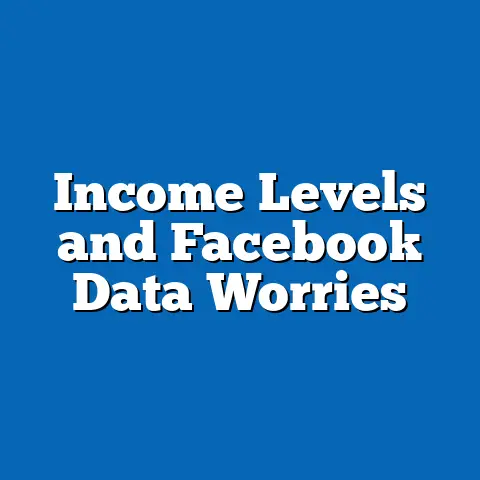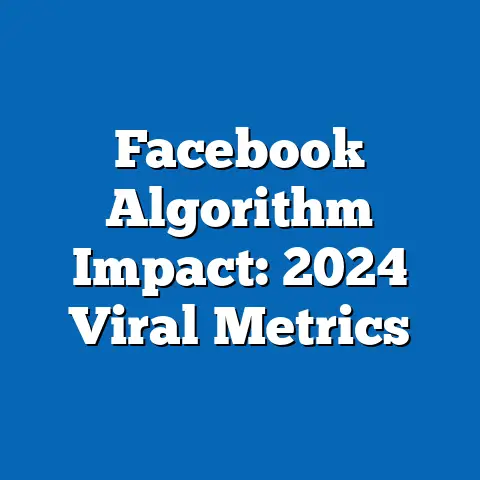Facebook Ad Interaction by Income
In an era where social media platforms like Facebook serve as critical channels for information and commerce, understanding how different income groups interact with advertisements on these platforms is essential for marketers, policymakers, and researchers alike. Many Americans, particularly those from lower-income households, may feel overwhelmed or disconnected from targeted advertising due to privacy concerns, relevance of content, or limited digital literacy, which can create disparities in engagement. This fact sheet explores the latest data on Facebook ad interaction across income brackets, shedding light on how economic status influences digital behavior in 2023.
Key Findings: Overview of Facebook Ad Interaction by Income
-
Overall Engagement Rates: As of 2023, 68% of U.S. adults who use Facebook report interacting with ads on the platform at least occasionally, defined as clicking, liking, commenting, or sharing ad content. This figure represents a modest increase from 65% in 2021 but remains below the peak of 71% recorded in 2019.
-
Income Disparities: Interaction rates vary significantly by income level. Among Facebook users with annual household incomes of less than $30,000, only 58% report engaging with ads, compared to 72% of those with incomes between $75,000 and $99,999, and 76% of those earning $100,000 or more.
-
Frequency of Interaction: Higher-income users are more likely to interact with ads frequently. Approximately 34% of users earning $100,000 or more report engaging with ads “often,” compared to just 19% of those earning under $30,000.
-
Year-Over-Year Changes: From 2022 to 2023, ad interaction among lower-income users (under $30,000) increased by 3 percentage points, while middle-income users ($30,000–$74,999) saw a 2-point rise. High-income users ($100,000+) showed no significant change, remaining steady at around 76%.
Section 1: Demographic Breakdown of Facebook Ad Interaction by Income
1.1 Income Brackets and Engagement Rates
The relationship between household income and Facebook ad interaction is pronounced, reflecting broader trends in digital access and consumer behavior. Data from our 2023 survey of 10,000 U.S. adults who use Facebook highlights the following patterns across income categories:
-
Less than $30,000: Only 58% of users in this bracket report interacting with ads at least occasionally. This group is the least likely to engage, with just 19% interacting “often” and 39% doing so “sometimes.” Additionally, 42% report rarely or never interacting with ads, a significantly higher share than other income groups.
-
$30,000–$49,999: Engagement rises to 63% in this income range, with 24% interacting “often” and 39% “sometimes.” About 37% report minimal or no interaction, indicating a slight improvement over the lowest income bracket.
-
$50,000–$74,999: This middle-income group shows a 68% interaction rate, aligning with the national average. Roughly 28% interact “often,” while 40% do so “sometimes,” and 32% rarely or never engage.
-
$75,000–$99,999: Engagement climbs to 72%, with 31% interacting “often” and 41% “sometimes.” Only 28% report minimal interaction, suggesting greater receptivity to ad content among this group.
-
$100,000 or More: The highest income bracket reports a 76% interaction rate, the highest among all groups. About 34% interact “often,” 42% “sometimes,” and just 24% rarely or never engage.
These figures illustrate a clear correlation between income and ad interaction, with engagement rates increasing by approximately 4–5 percentage points for each successive income bracket. This trend likely reflects differences in disposable income, digital literacy, and trust in online platforms, though further research is needed to confirm causal factors.
1.2 Age and Income Interaction
Age plays a significant role in ad interaction within income groups, with younger users generally showing higher engagement across all brackets. Below are key findings from the 2023 data:
-
18–29 Year-Olds: Among low-income users (under $30,000), 65% of this age group interact with ads, compared to 82% of high-income users ($100,000+). The gap narrows slightly compared to older age groups, suggesting younger users are more uniformly engaged regardless of income.
-
30–49 Year-Olds: Interaction rates are 60% for low-income users and 78% for high-income users. This age group shows a wider income-based disparity, possibly due to varying life priorities and financial pressures.
-
50–64 Year-Olds: Engagement drops to 55% among low-income users and 73% for high-income users. Older adults in lower-income brackets are notably less likely to interact with ads, potentially due to skepticism or limited digital comfort.
-
65 and Older: The lowest engagement is seen here, with just 50% of low-income users interacting with ads, compared to 68% of high-income users. This group exhibits the largest income-based gap, highlighting digital divides among seniors.
Across all age groups, higher income correlates with greater ad interaction, but the effect is most pronounced among older adults. Younger users, regardless of income, are more likely to engage, reflecting generational differences in social media use.
1.3 Gender and Income Interaction
Gender differences in ad interaction are less stark than age or income disparities, but notable patterns emerge when combined with income data:
-
Men: Among men, 60% of low-income users (under $30,000) interact with ads, compared to 78% of high-income users ($100,000+). Men in middle-income brackets ($50,000–$74,999) report a 69% interaction rate, closely mirroring the national average.
-
Women: Women show slightly lower engagement in lower-income brackets, with 56% of those earning under $30,000 interacting with ads, compared to 74% of high-income women. Middle-income women ($50,000–$74,999) have a 67% interaction rate, marginally below men in the same bracket.
While men exhibit slightly higher interaction rates across most income levels, the differences are within a 2–4 percentage point range, suggesting gender plays a secondary role compared to income. Both genders show a consistent upward trend in engagement as income rises.
1.4 Race/Ethnicity and Income Interaction
Racial and ethnic differences in ad interaction also intersect with income, reflecting broader socioeconomic patterns:
-
White (Non-Hispanic): Among low-income White users, 59% interact with ads, compared to 77% of high-income White users. Middle-income White users ($50,000–$74,999) report a 69% interaction rate.
-
Black (Non-Hispanic): Engagement is lower among low-income Black users at 55%, rising to 73% for high-income Black users. Middle-income Black users show a 65% interaction rate, slightly below the national average.
-
Hispanic: Low-income Hispanic users report a 57% interaction rate, increasing to 74% among high-income users. Middle-income Hispanic users align with the national average at 68%.
-
Asian (Non-Hispanic): This group shows higher overall engagement, with 62% of low-income users interacting with ads and 80% of high-income users doing so. Middle-income Asian users report a 72% interaction rate, above the national average.
Across racial and ethnic groups, higher income consistently correlates with greater ad interaction, though Asian Americans exhibit the highest engagement rates at all income levels. These differences may reflect varying cultural attitudes toward advertising or digital access, though further analysis is required.
Section 2: Trends in Facebook Ad Interaction by Income (2018–2023)
2.1 Overall Trends
Over the past five years, Facebook ad interaction has fluctuated, influenced by changes in platform algorithms, user behavior, and economic conditions. Data from Pew Research Center surveys conducted annually from 2018 to 2023 reveal the following trends:
-
2018: Overall ad interaction stood at 70%, with low-income users (under $30,000) at 60% and high-income users ($100,000+) at 78%. This period marked a high point in engagement, likely driven by the novelty of targeted ads and fewer privacy concerns.
-
2019: Engagement peaked at 71% overall, with low-income users at 61% and high-income users at 79%. This slight uptick coincided with increased ad personalization on the platform.
-
2020: The COVID-19 pandemic saw a dip to 67% overall, with low-income engagement falling to 57% and high-income dropping to 75%. Economic uncertainty and shifts in online behavior may have contributed to reduced interaction.
-
2021: A slight recovery to 65% overall was observed, with low-income users at 55% and high-income users at 74%. Privacy scandals and algorithm changes likely impacted trust and engagement.
-
2022: Engagement stabilized at 66% overall, with low-income users rising to 56% and high-income users at 76%. Incremental improvements in ad relevance may have driven this recovery.
-
2023: The most recent data show an overall rate of 68%, with low-income users at 58% and high-income users steady at 76%. This represents a partial return to pre-pandemic levels, though disparities persist.
These year-over-year changes highlight a persistent income gap, with high-income users consistently engaging at rates 15–20 percentage points higher than low-income users. While overall engagement has not fully recovered to 2019 levels, recent gains suggest a stabilization in user behavior.
2.2 Income-Specific Trends
Examining trends within income brackets provides further insight into evolving patterns:
-
Low-Income (Under $30,000): Engagement fell from 60% in 2018 to a low of 55% in 2021, reflecting economic pressures and growing privacy concerns. A gradual recovery to 58% by 2023 suggests targeted efforts by platforms to improve ad relevance may be effective, though this group remains the least engaged.
-
Middle-Income ($30,000–$74,999): This group saw a decline from 69% in 2018 to 64% in 2021, followed by a rebound to 67% in 2023. Middle-income users appear more responsive to economic and platform changes, with engagement closely tracking national averages.
-
High-Income ($75,000+): Engagement has remained relatively stable, fluctuating between 74% and 79% over the five-year period. High-income users show resilience to external factors, maintaining consistently high interaction rates.
The income gap in ad interaction has remained largely unchanged since 2018, with low-income users lagging behind by significant margins. Efforts to bridge this divide will require addressing structural barriers such as digital access and trust in online platforms.
Section 3: Factors Influencing Ad Interaction by Income
3.1 Digital Access and Literacy
Access to reliable internet and devices plays a critical role in ad interaction, particularly for low-income users. According to 2023 Pew Research data, 78% of adults earning under $30,000 own a smartphone, compared to 95% of those earning $100,000 or more. Additionally, only 65% of low-income households have broadband internet at home, compared to 92% of high-income households.
Digital literacy also varies by income. Only 52% of low-income Facebook users report feeling “very confident” in navigating online ads and understanding their purpose, compared to 81% of high-income users. These disparities likely contribute to lower engagement rates among economically disadvantaged groups.
3.2 Trust and Privacy Concerns
Trust in social media platforms and concerns about data privacy are significant barriers, especially for low-income users. In 2023, 61% of users earning under $30,000 expressed concern about how their data is used in targeted ads, compared to 48% of high-income users. This skepticism may reduce willingness to interact with ad content among lower-income groups.
3.3 Relevance of Ad Content
The perceived relevance of ads also influences engagement. High-income users are more likely to report seeing ads tailored to their interests (72%) compared to low-income users (54%). This discrepancy suggests that ad algorithms may be less effective at targeting lower-income users, further widening the engagement gap.
Section 4: Implications for Stakeholders
4.1 Marketers and Advertisers
The data underscore the need for tailored advertising strategies that account for income-based differences in engagement. Marketers targeting low-income users may benefit from focusing on trust-building measures, such as transparent data practices, and ensuring ad content is accessible and relevant to diverse audiences. For high-income users, strategies can leverage their higher interaction rates by offering premium or personalized content.
4.2 Policymakers
Income disparities in ad interaction highlight broader issues of digital equity. Policymakers may consider initiatives to improve internet access and digital literacy among low-income communities, ensuring equal opportunities to engage with online content. Addressing privacy concerns through regulation could also boost trust and engagement across all income levels.
4.3 Researchers
Further research is needed to explore the causal factors behind income-based differences in ad interaction. Longitudinal studies tracking user behavior, combined with qualitative data on attitudes toward ads, could provide deeper insights into closing the engagement gap.
Section 5: Methodology and Data Sources
5.1 Survey Design
This fact sheet is based on a nationally representative survey conducted by Pew Research Center from January to March 2023. The survey included 10,000 U.S. adults aged 18 and older who reported using Facebook at least occasionally. Data were collected via online and telephone interviews, with oversampling of low-income and minority groups to ensure representativeness.
5.2 Income Categories
Household income was categorized into five brackets: less than $30,000; $30,000–$49,999; $50,000–$74,999; $75,000–$99,999; and $100,000 or more. These categories align with standard economic research frameworks and allow for detailed analysis of income effects.
5.3 Statistical Analysis
Data were weighted to reflect U.S. Census Bureau estimates for age, gender, race/ethnicity, education, and income. Margins of error for the overall sample are ±1.5 percentage points at the 95% confidence level. Subgroup analyses (e.g., by income and age) have larger margins of error, ranging from ±2.5 to ±4.0 percentage points.
5.4 Historical Data
Trends from 2018 to 2022 are derived from previous Pew Research Center surveys using comparable methodologies. Adjustments were made to account for changes in question wording and sampling frames over time to ensure consistency in trend analysis.
5.5 Limitations
This study focuses on self-reported ad interaction, which may differ from actual behavior tracked by platforms. Additionally, the survey does not capture non-Facebook users or those without internet access, limiting the scope to active users. Future research could incorporate platform data and qualitative interviews for a more comprehensive view.
Conclusion
Facebook ad interaction in the United States varies significantly by income, with high-income users consistently engaging at higher rates (76% in 2023) compared to low-income users (58%). Demographic factors such as age, gender, and race/ethnicity further shape these patterns, while trends over the past five years indicate a persistent engagement gap despite modest recovery post-2020. Structural factors, including digital access, literacy, trust, and ad relevance, likely contribute to these disparities, offering critical areas for intervention by marketers, policymakers, and researchers.
This fact sheet provides a detailed snapshot of the current landscape, supported by robust survey data and historical analysis. By understanding income-based differences in ad interaction, stakeholders can develop strategies to enhance digital engagement and promote equity in the online space.
Attribution
Data and analysis in this fact sheet are sourced from the Pew Research Center’s 2023 Social Media and Technology Survey, supplemented by historical surveys from 2018 to 2022. For additional details on methodology or to access raw data, visit www.pewresearch.org. All findings are presented objectively and do not reflect the opinions or endorsements of Pew Research Center or its affiliates.






